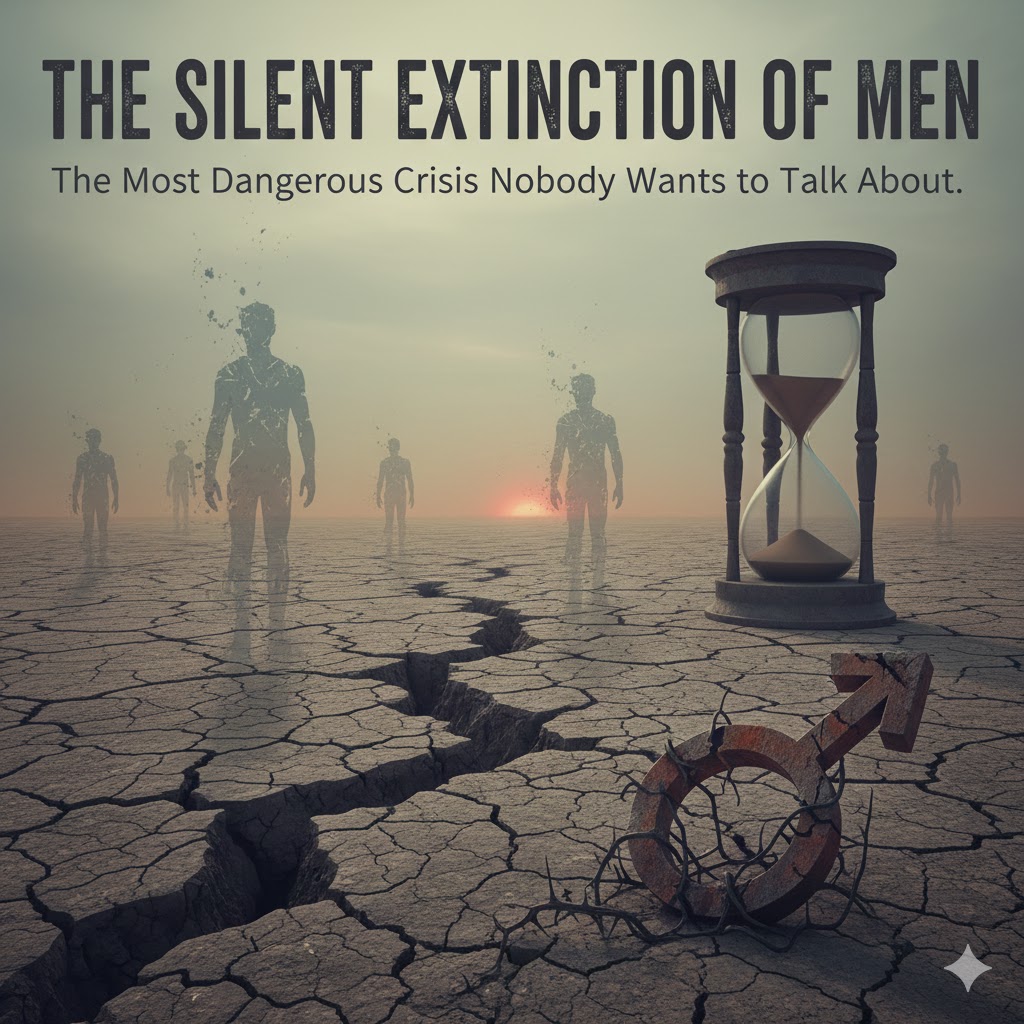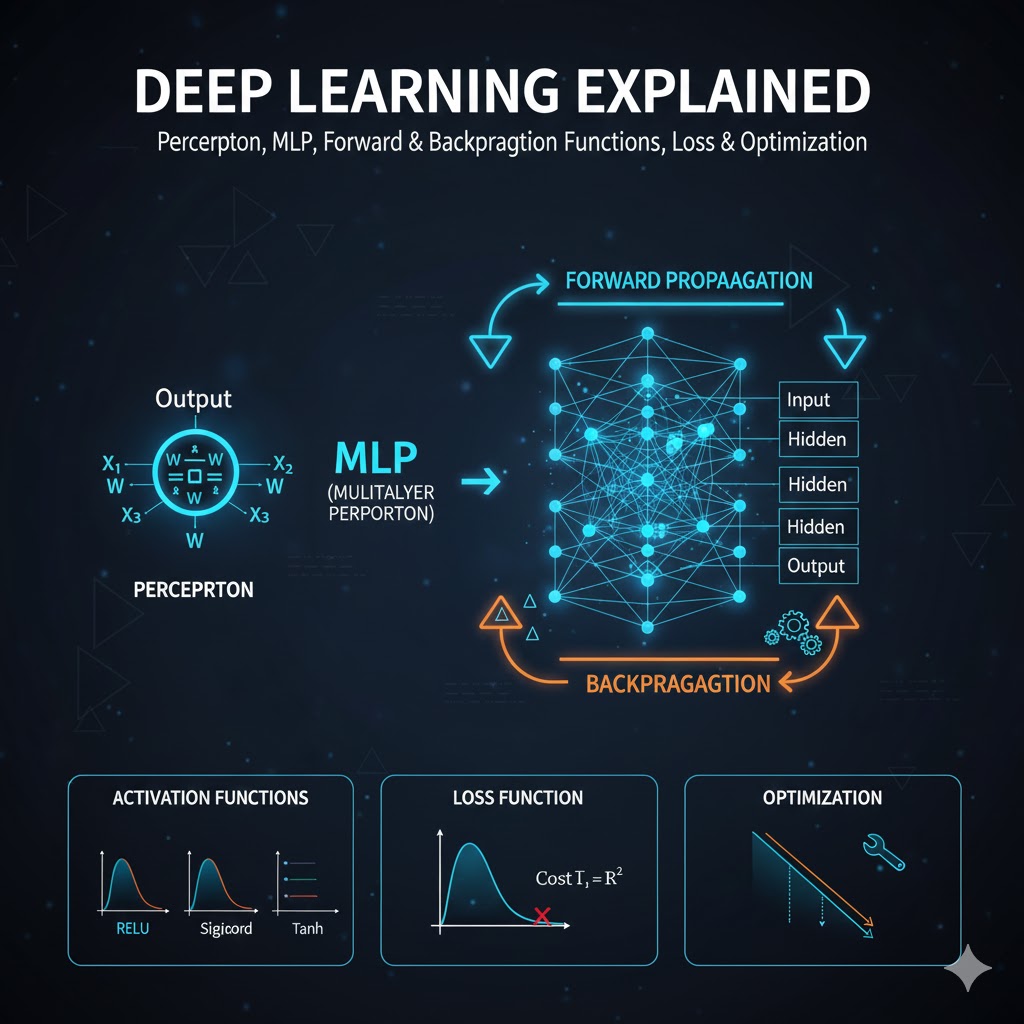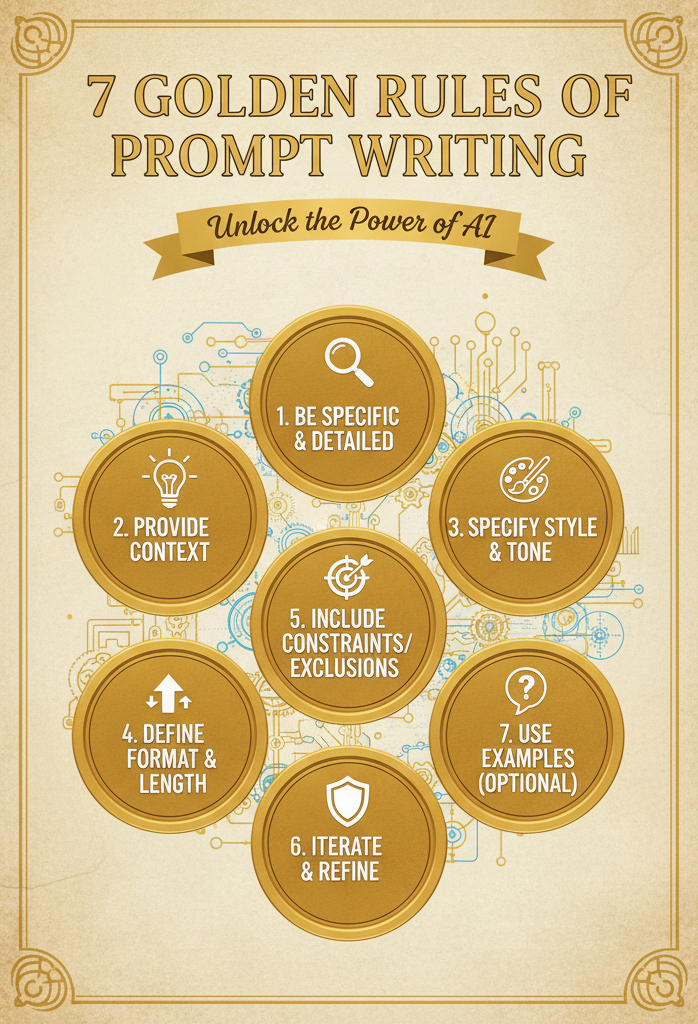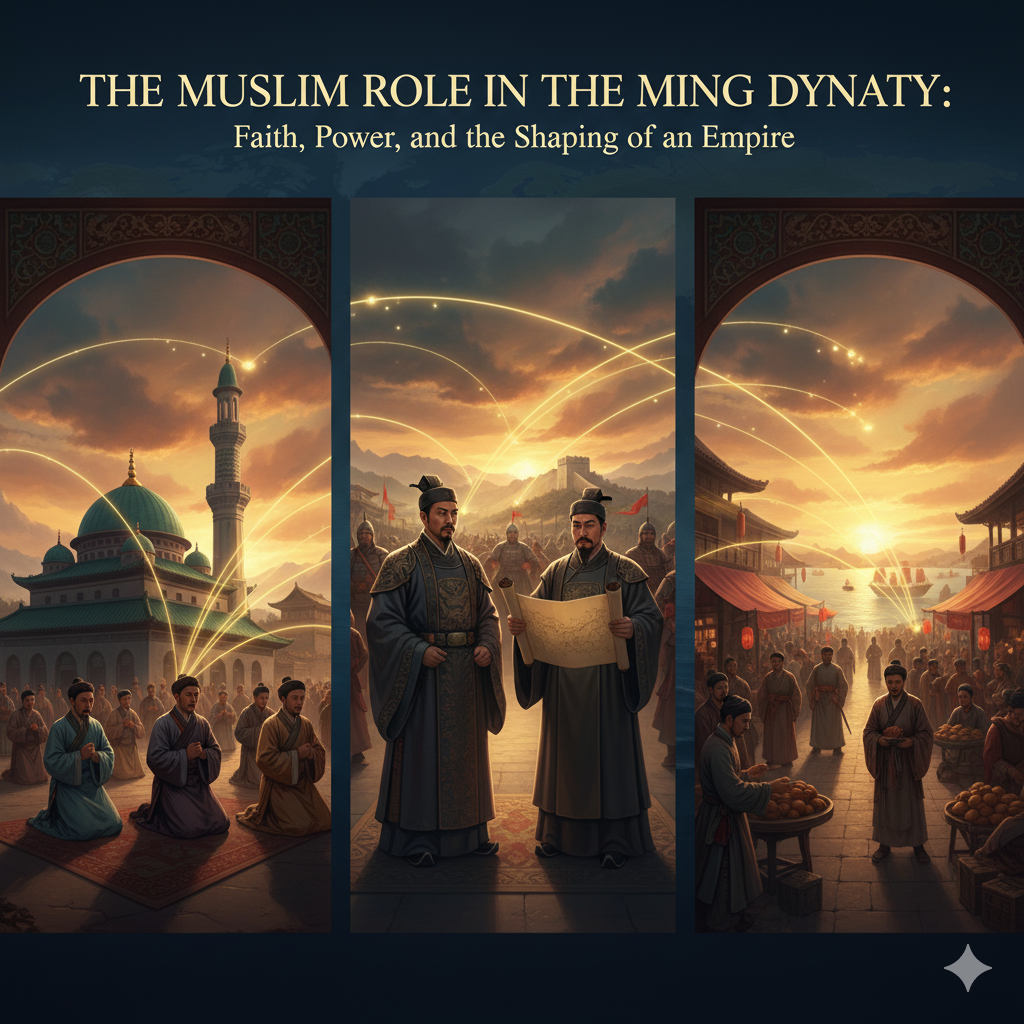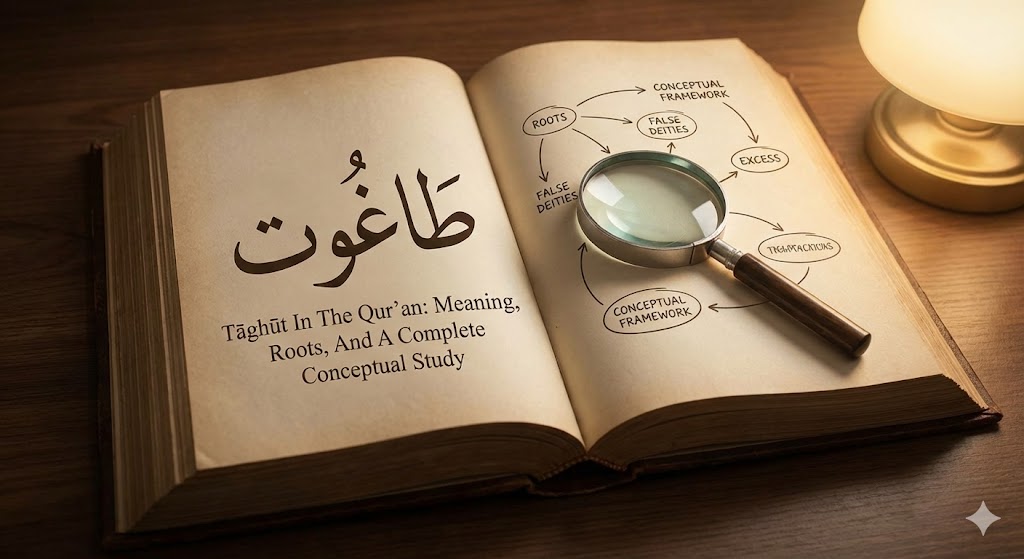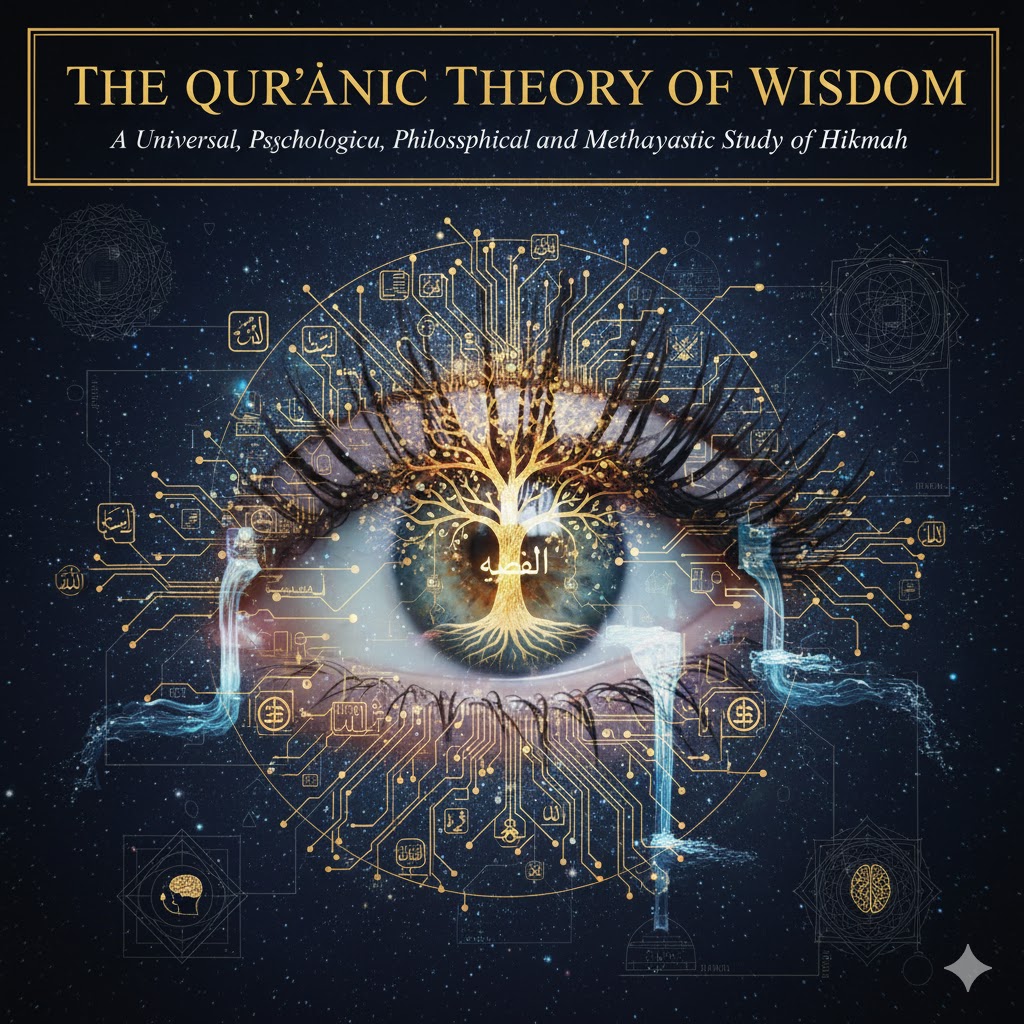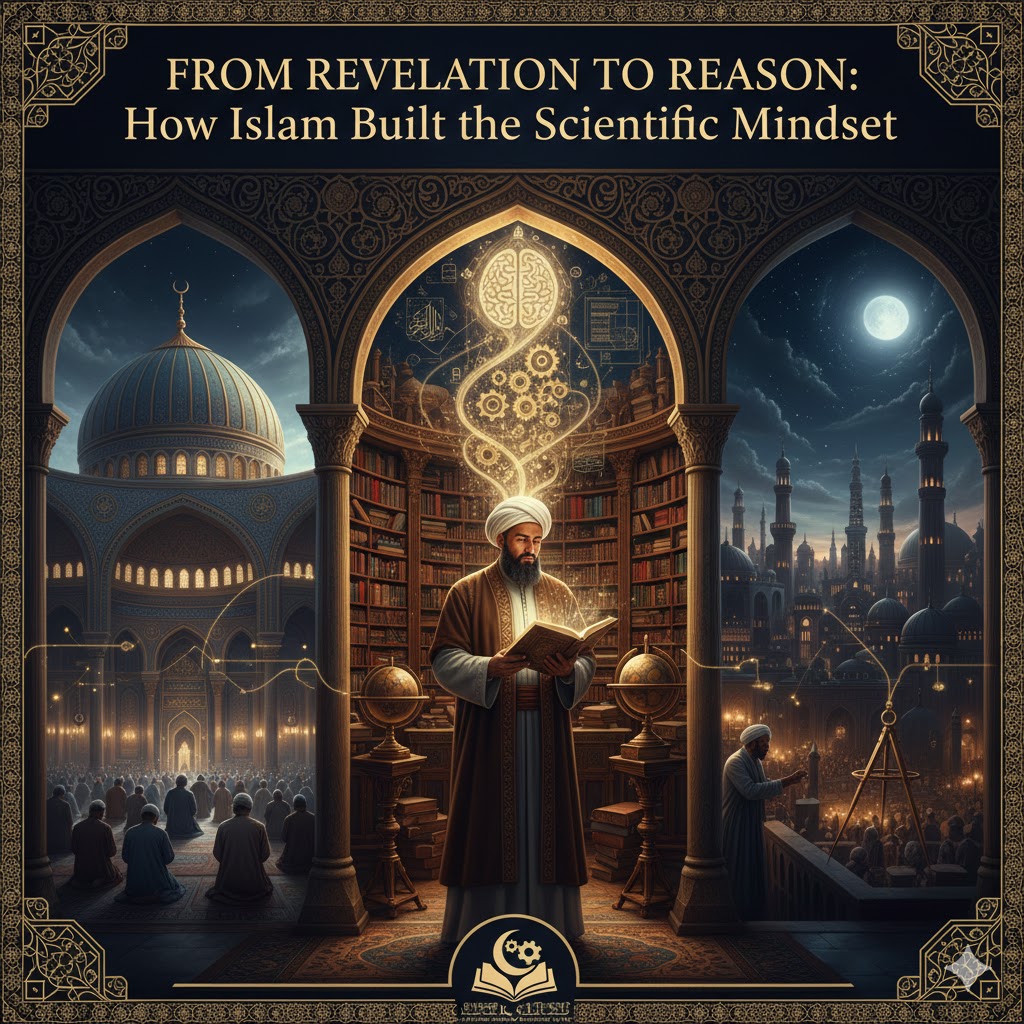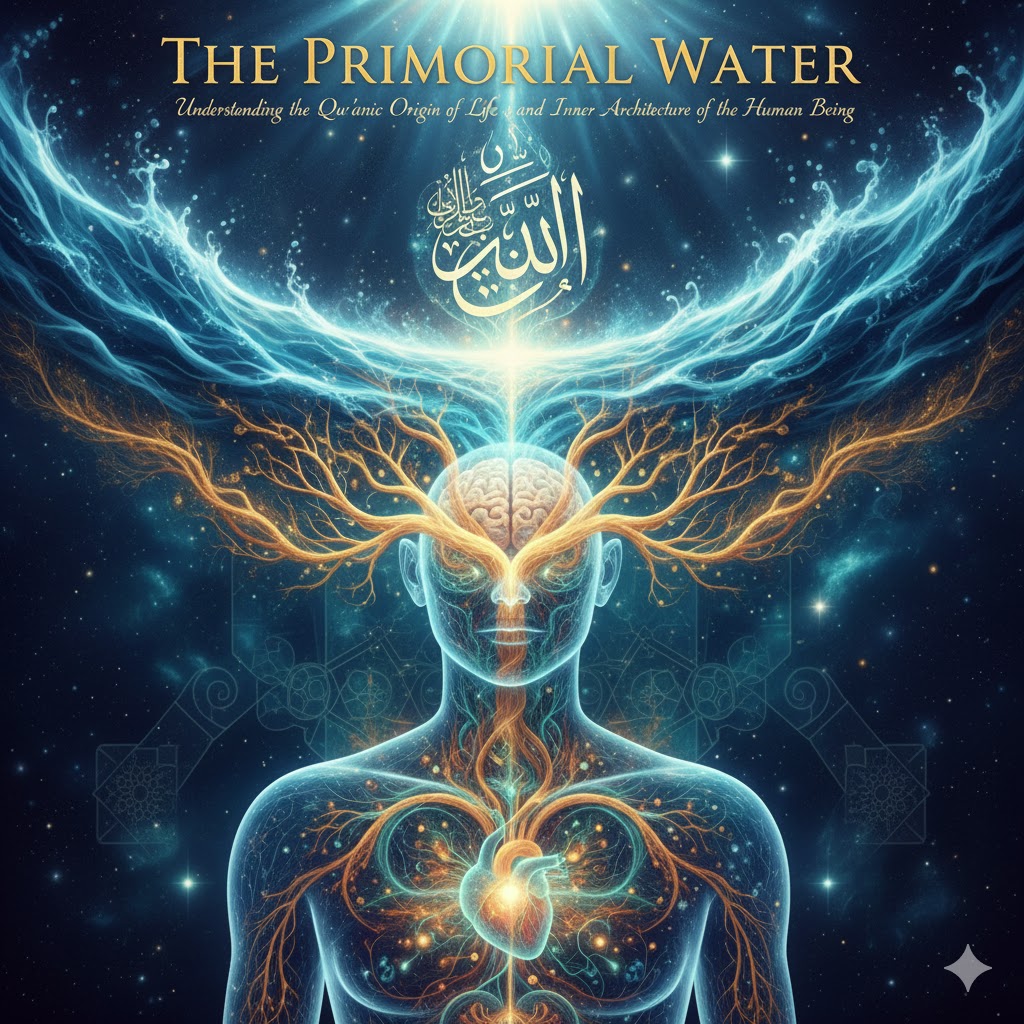In the corridors of the Ming Dynasty (1368–1644), amid jade screens and lacquered halls, a quiet revolution unfolded — not through conquest or rebellion, but through knowledge, faith, and service.
Long before the world spoke of globalization or cultural exchange, the empire of the Ming had already become a crossroads of civilizations, and among its most loyal builders stood a community often forgotten in mainstream history — the Muslims of China.
They were generals and astronomers, merchants and mathematicians, translators and admirals. They built mosques that mirrored Chinese temples, wrote Arabic in brushstrokes, and prayed facing Mecca from cities like Nanjing, Xi’an, and Quanzhou.
They served emperors, defended borders, mapped the stars, and sailed the oceans — all while keeping their faith alive within a Confucian empire.
The story of Islam in the Ming era is not a story of outsiders tolerated at the margins; it is the story of a people woven into the very fabric of imperial China.
🌍 A Civilization in Transition
When the Ming dynasty rose from the ashes of Mongol rule, it inherited a multiethnic empire shaped by centuries of Silk Road exchange.
The fall of the Yuan had left a vacuum of leadership, but it also left behind a powerful legacy — one of cultural interconnection, where Muslims from Persia, Central Asia, and Arabia had brought to China their sciences, their navigation, and their faith.
The founder of the Ming, Emperor Hongwu (Zhu Yuanzhang), recognized the value of this heritage. He was pragmatic — he understood that the empire’s strength depended not on isolation, but on diversity. And so, rather than purging the Muslim communities established during Mongol rule, he embraced them, integrating them into the administrative, scientific, and military backbone of the new dynasty.
The result was a period of unprecedented harmony and productivity, where the ideals of Confucian ethics and Islamic scholarship worked side by side.
The imperial court became a place where astronomers who prayed five times a day could predict eclipses, where Muslim navigators charted the seas for Buddhist merchants, and where Arabic and Chinese manuscripts shared the same shelves in royal libraries.
⚓ An Empire of Faith and Function
Among the most powerful symbols of this synthesis was Admiral Zheng He (Ma He) — a Hui Muslim from Yunnan who rose from captivity to become commander of the largest naval fleet the world had ever seen.
His voyages under Emperor Yongle were not isolated events of exploration; they were the expression of a civilization confident in its diversity, using both science and spirituality as instruments of diplomacy.
Behind Zheng He’s legend stood entire networks of Muslim scholars, shipbuilders, translators, and cartographers — the intellectual infrastructure of an empire that dared to look outward.
It was through their efforts that China’s influence stretched from the South China Sea to the coasts of Arabia and Africa, centuries before the rise of European seaborne empires.
These Muslims were not guests in the empire — they were its engineers, its explorers, its astronomers, and its conscience.
🕌 The Harmony of Knowledge and Belief
At the heart of their contribution lay a philosophy both Confucian and Islamic — that knowledge is a form of worship, and service to humanity is service to Heaven.
The Ming rulers saw in their Muslim subjects a rare combination of moral integrity, intellectual rigor, and global awareness.
From the observatories of Beijing to the shipyards of Nanjing, Muslim experts fused Islamic geometry with Chinese cosmology, producing innovations in astronomy, calendar-making, and navigation that defined the Ming Golden Age.
Their mosques, built in traditional Chinese style with sweeping roofs and courtyards, stood as symbols of a civilization where faith could coexist with empire, where science was sanctified by belief, and where cultural difference was seen not as a threat, but as enrichment.
🌠 A Forgotten Chapter of World History
And yet, when history was later written through the lens of European expansion, the story of Muslim China faded. The same empire that had once mapped the Indian Ocean through the eyes of men like Zheng He turned inward, erasing traces of its pluralism and maritime glory.
But the record still speaks — in Arabic inscriptions on ancient Chinese mosques, in Ming-era star charts annotated with Islamic numerals, and in the living memory of the Hui people, who carry both the crescent and the dragon in their heritage.
The Muslim role in the Ming dynasty was not a mere footnote — it was a pillar of China’s global identity.
It reminds us that civilizations do not thrive by purity, but by partnership.
And in that partnership — between faith and empire, East and West, knowledge and devotion — the Ming dynasty reached one of its most luminous heights.
🕌 1. The Hui Muslims – A Community of Integration
The majority of China’s Muslims during the Ming era were Hui people — descendants of Central Asian, Persian, and Arab traders who had settled in cities such as Xi’an, Quanzhou, Guangzhou, and Yunnan since the Tang and Song dynasties.
Over generations, they had adopted the Chinese language and Confucian social customs while preserving Islamic faith, law, and dietary practices.
The Ming rulers viewed the Hui not as foreigners but as loyal subjects. Emperor Hongwu (Zhu Yuanzhang), founder of the dynasty, recognized their discipline, education, and transnational connections. He granted them official recognition and encouraged the building of mosques, particularly in Nanjing, Beijing, and Yunnan — several of which still stand today.
Muslim communities were especially respected for their skills in:
- Astronomy (Islamic calendars and star charts)
- Medicine and pharmacology
- Trade and maritime navigation
- Military strategy and logistics
The combination of faith, intellect, and loyalty made them indispensable to the empire’s expansion.
⚔️ 2. Muslim Generals and Statesmen – The Guardians of the Empire
Among the most distinguished Muslim figures of the Ming Dynasty was Lan Yu, a general who helped Emperor Hongwu defeat the remnants of Mongol power in northern China. Lan Yu was later titled Duke of Liang for his victories.
Another prominent Muslim general, Chang Yuchun, played a decisive role in the wars that established Ming control. Historical accounts describe him as a fearless warrior, loyal to both the emperor and his Islamic ethics of justice and courage.
The imperial court also employed Muslim administrators in diplomatic and commercial roles, particularly those who could speak Persian or Arabic — vital languages for connecting with kingdoms in Central Asia, India, and Arabia.
Their presence ensured that China remained an active participant in the Indian Ocean trade network, importing knowledge, technologies, and cultural influences from the broader Muslim world.
🧭 3. The Science of the Stars – Muslim Contributions to Astronomy
One of the most profound legacies of Islam in the Ming Dynasty lay in astronomy — a science that had always been both spiritual and practical in the Islamic world.
Muslim astronomers brought with them centuries of mathematical innovation — spherical trigonometry, observational instruments, and tables of celestial motion.
The Ming court inherited the Islamic Astronomical Bureau (Huihui Sitianjian) from the Yuan dynasty and maintained it well into the Ming period.
Muslim astronomers like Ma Yize, and later his successors, helped synchronize the Islamic lunar calendar with the Chinese solar-lunar system, improving navigation, agriculture, and timekeeping.
They introduced the astrolabe and the armillary sphere, which became crucial in maritime exploration — tools later used by Zheng He’s navigators during their oceanic voyages.
The fusion of Islamic astronomy and Chinese cosmology became a defining feature of Ming scientific progress — a union of observation and philosophy that mirrored the broader harmony between faith and knowledge.
🌊 4. Zheng He – The Pinnacle of Muslim Service in the Ming Court
Among all the Muslim officials of the Ming era, none embodied their role more fully than Admiral Zheng He (Ma He).
His story — from a Muslim child in Yunnan to the supreme commander of the world’s largest fleet — represents both the trust placed in Muslims by the Ming court and the bridging spirit of the age.
Zheng He’s Islamic upbringing shaped his sense of discipline, honesty, and diplomacy. His voyages carried not only the banner of the Ming Emperor but also the ethics of his faith — cooperation, respect for other cultures, and the pursuit of knowledge as a divine duty.
He established mosques along his routes — in Semarang (Indonesia), Chittagong (Bangladesh), and Malacca (Malaysia) — leaving behind a trail of Islamic architecture and multicultural communities.
His fleets, staffed by Chinese, Arab, and Malay sailors, became floating symbols of intercultural harmony.
Through Zheng He, the Ming dynasty reached its greatest outward expression of power — but through his humility and diplomacy, it also reached its greatest expression of humanity.
💠 5. Religious Tolerance and Exchange
The Ming rulers were remarkably pragmatic about religion. They saw Islam, Buddhism, Taoism, and Christianity as parallel expressions of moral order, so long as they did not challenge imperial authority.
Islamic scholars often participated in court rituals alongside Confucian officials, translating philosophical works between Arabic, Persian, and Chinese.
Mosques flourished in Xi’an, Beijing, and Guangzhou, blending Chinese architectural styles with Arabic inscriptions. The Great Mosque of Xi’an, for example, with its courtyards and calligraphy, stands as a perfect fusion of Chinese artistry and Islamic spirituality — a physical metaphor for coexistence.
This era saw not only religious coexistence but also intellectual exchange:
Chinese scholars studied Islamic medicine and astronomy, while Muslim scholars translated Confucian ethics and Neo-Confucian texts.
🕌 6. Decline and End of the Muslim Golden Era in China
After Zheng He’s death and the Ming dynasty’s shift toward isolationism, the position of Muslims in statecraft gradually weakened.
Trade restrictions cut off China’s connection with the Indian Ocean world, and Muslims, once diplomats and navigators, became local merchants and scholars.
However, their cultural and intellectual legacy persisted.
Many Chinese Muslim families (the Hui) preserved Arabic manuscripts, maintained schools (madrassahs), and continued to serve as community leaders and artisans.
Even as China turned inward, Islam remained firmly rooted — a reminder of the time when Muslims were not merely tolerated but essential to the empire’s progress.
🌠 7. Enduring Legacy
The Muslim contribution to the Ming dynasty was not measured in battles won or wealth amassed, but in bridges built — between continents, between science and faith, and between China and the wider world.
They gave China:
- The stars to navigate by,
- The maps to connect civilizations,
- And the example of leadership that fused humility with power.
Through their service, Muslims like Zheng He proved that identity need not divide loyalty — that one could be fully Chinese and fully Muslim, a servant of both empire and God.
“To serve truth and harmony is to serve the emperor,” Zheng He once said — a sentiment that captured the essence of Muslim contribution to the Ming.
Their story remains a quiet chapter in world history, but its echoes reach far:
in every compass needle, every sea route, and every alliance built on understanding rather than conquest.
Muslim Expertise in the Ming Dynasty – The Four Pillars of Service
Muslim communities during the Ming era were not merely tolerated minorities — they were integral contributors to the empire’s governance, defense, and intellectual life.
Their skills reflected centuries of global learning drawn from the Islamic world — from Baghdad and Samarkand to Delhi and Cairo — fused with Chinese precision and pragmatism.
The Ming emperors, especially Hongwu and Yongle, recognized that the success of their empire depended on more than borders and armies. It depended on knowledge — and in the Muslims of China, they found a people who had perfected the marriage between faith and science.
🌌 1. Astronomy – Mapping the Heavens with Faith and Reason
The Muslims of the Ming court inherited a long legacy of Islamic astronomy, one that stretched back to the observatories of Baghdad and Maragha. When they entered imperial service, they brought with them sophisticated mathematical systems, instruments, and celestial theories unknown to much of East Asia.
The Huihui Sitianjian (Muslim Astronomical Bureau), founded during the Yuan and continued into the Ming dynasty, became one of the most respected institutions in the empire. It worked alongside the traditional Chinese Bureau of Astronomy, combining Islamic trigonometry, Greek geometry, and Chinese cosmology to refine the empire’s understanding of the skies.
Muslim astronomers used instruments such as:
- The astrolabe, which allowed them to determine latitude and time using the stars.
- The armillary sphere, to chart planetary movement and seasonal cycles.
- Precise lunar and solar tables, used to predict eclipses and regulate calendars.
Their work refined China’s agricultural calendar, ensured accurate imperial rituals, and guided navigators at sea.
Among these scholars were descendants of the great astronomer Ma Yize, who had served earlier dynasties and whose mathematical tables influenced generations of court astronomers.
For these Muslim scientists, astronomy was not just practical — it was spiritual.
To measure the heavens was to trace the order of God (Allah).
They saw celestial harmony as a mirror of divine perfection, blending science and theology into one sacred pursuit.
⚕️ 2. Medicine and Pharmacology – Healing the Empire
Muslim physicians brought to the Ming court a medical tradition that fused Greek, Persian, and Indian knowledge — refined over centuries in the hospitals and madrasahs of the Islamic world.
Their texts, translated into Chinese, introduced new concepts in anatomy, botany, and pharmacology.
One of the most influential works was the Huihui Yaofang (Muslim Medical Formulary) — a compilation of medical recipes and treatments used by court physicians of Muslim background. It contained remedies derived from herbs, minerals, and animal substances, along with detailed notes on dosage, diagnosis, and prevention.
These Muslim doctors introduced China to:
- Herbal therapies and compound medicines unknown in East Asia.
- Quarantine practices for infectious diseases.
- Systematic surgical procedures and early forms of anesthesia.
- Balanced dietary regimens based on humoral theory — concepts later integrated into Chinese medical thought.
Their approach was holistic, viewing the body as a microcosm of the universe — echoing both Islamic and Daoist philosophical ideas about balance and harmony.
The Ming emperors often appointed Muslim physicians to the Imperial Medical Bureau, where they treated not only nobles but also contributed to public health measures in major cities.
⚓ 3. Trade and Maritime Navigation – The Lifelines of an Empire
Muslims were the architects of the Ming dynasty’s maritime and commercial expansion.
For centuries, Muslim merchants from Arabia, Persia, and Central Asia had dominated the Indian Ocean trade network, linking China with ports as far as East Africa.
By the time of the Ming dynasty, these trade routes were already infused with Islamic expertise — in cartography, navigation, and long-distance logistics.
Muslim navigators and shipbuilders in cities like Quanzhou, Guangzhou, and Hangzhou became central figures in the Ming’s oceanic projects. They provided:
- Astrolabes and magnetic compasses calibrated with Islamic star charts.
- Maritime maps (Daqin or “Arab charts”) showing ports across the Indian Ocean.
- Knowledge of monsoon winds and sea currents that allowed for round-trip voyages to India, Arabia, and Africa.
It was through their expertise that the Ming fleet under Admiral Zheng He, himself a Muslim, could navigate with such precision over vast distances.
The Islamic science of navigation, refined in places like Basra and Cairo, became the unseen compass of China’s maritime glory.
Muslim traders also acted as cultural ambassadors, fluent in Arabic, Persian, and Malay, connecting the Ming court to markets in Calicut, Aden, Hormuz, and Malindi.
They introduced new commodities — spices, ivory, textiles, and medicinal herbs — while spreading Chinese goods such as porcelain and silk across half the world.
In every port, they left behind something more enduring than trade: trust. Their integrity and consistency earned them a reputation that made Chinese commerce synonymous with reliability.
⚔️ 4. Military Strategy and Logistics – The Warriors of Loyalty
In the early Ming period, Muslims were among the empire’s most skilled generals and tacticians, known for their discipline, loyalty, and strategic brilliance.
Emperor Hongwu himself had risen from the ranks of rebellion, and he valued generals who understood both frontier warfare and faith-driven ethics.
Notable Muslim commanders included:
- Chang Yuchun (常遇春) – one of the most formidable generals who helped Zhu Yuanzhang defeat Mongol forces and establish the Ming dynasty. He was remembered for his bravery and moral restraint.
- Lan Yu (蓝玉) – the Duke of Liang, who led campaigns that extended the empire’s northern and western borders, securing trade routes through Central Asia.
- Mu Ying (沐英) – an adopted Muslim son of the emperor who became governor of Yunnan, ensuring its stability and serving as a bridge between China’s heartland and its diverse southwestern frontier.
Muslim officers also introduced advanced methods of logistics and supply management, ensuring troops could move across great distances efficiently — knowledge inherited from centuries of Silk Road caravans and military science from the Islamic world.
Their emphasis on discipline, code of honor, and strategic patience resonated with the Confucian ideals of loyalty and duty.
They served not only as warriors but also as diplomats and administrators, embodying the fusion of moral strength and imperial service.
🌠 A Civilization Enriched by Many Hands
Together, these four pillars — astronomy, medicine, navigation, and military science — show how Muslim contributions under the Ming dynasty were not confined to religion or ethnicity.
They were universal acts of service that strengthened the empire’s body, mind, and soul.
In the hands of Chinese Muslims, knowledge was not a foreign import — it became a shared heritage, seamlessly integrated into the Confucian order.
Their legacy endures in China’s ancient observatories, its surviving mosques, its maritime maps, and in the unbroken thread of Hui scholarship that continues to this day.
They looked at the stars, healed the sick, commanded the seas, and defended the realm —
and in doing so, they proved that faith and empire could thrive as one.

